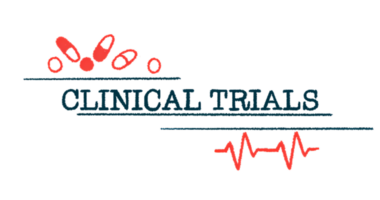FDA clears CAP-003 Parkinson’s gene therapy to be tested in trials
Dosing of adults with form of disease tied to GBA mutations may start this year

CAP-003, a gene therapy for Parkinson’s disease associated with GBA mutations, has been cleared by the U.S. Food and Drug Administration (FDA) for testing in clinical trials. These mutations are the most common genetic risk factor for Parkinson’s.
With this FDA clearance, developer Capsida Biotherapeutics plans to launch a Phase 1/2 trial (NCT07011771) testing CAP-003 in approximately 31 adults with Parkinson’s disease associated with GBA mutations in study sites across the U.S. Dosing is expected to start later this year, according to the company.
“We recognize the urgency for new treatment approaches, so we are working diligently to initiate the Phase 1/2 clinical trial for CAP-003 with the aim of dosing the first patient in the third quarter of this year,” Swati Tole, MD, chief medical officer of Capsida, said in a company press release.
Developer expects gene therapy’s effects will slow disease progression
GBA mutations decrease the activity of glucocerebrosidase (GCase), an enzyme that is important for recycling certain cellular materials. Without enough properly functioning GCase, clumps of misfolded alpha-synuclein proteins accumulate in neurons in the brain. These clumps ultimately lead to cell death, causing symptoms of Parkinson’s.
Several experimental therapies that aim to clear alpha-synuclein clumps or prevent their buildup may help slow or stop neurodegeneration in Parkinson’s. However, no currently approved therapies target GCase, according to Capsida.
“[Parkinson’s disease associated with GBA mutations] is an area of substantial unmet need given the lack of approved treatments that target GCase, which is the protein encoded by the GBA gene, and provide meaningful slowing or halting of disease progression,” Tole said.
CAP-003, a gene therapy delivered via an intravenous, or into-the-vein, infusion, is designed to deliver a working version of GBA to nerve cells. Capsida packages the genetic material in a protein shell called a capsid, which is derived from an adeno-associated virus that doesn’t cause disease in humans.
From the bloodstream, CAP-003 moves to the brain, where cells unpack the gene from the capsid. With this working version of GBA, neurons may produce GCase, which should increase the levels of the enzyme. Capsida expects this will slow disease progression.
First study of CAP-003 in humans
Preclinical studies involving nonhuman primates showed that with one infusion of CAP-003, GCase activity increased in several areas of the brain important for motor control. Researchers expect that increasing GCase activity by about 30% will restore normal enzyme levels in people with Parkinson’s related to GBA mutations; the increase seen in primates was substantially larger than this.
In a toxicology study, primates tolerated the therapy well, and tissue samples didn’t show signs of adverse effects.
Now, Capsida plans to initiate the first study of CAP-003 in humans. The Phase 1/2 trial will enroll adult participants, ages 21 to 75, who have Parkinson’s associated with GBA mutations. After a single into-the-vein infusion, participants will have regular clinical checkups and tests for the following two years.
The first part of the trial will test different dose levels in small participant groups. Based on safety and tolerability results from this part, Capsida will choose a dose to test in the second part. In addition to keeping track of side effects, the study will include efficacy metrics of GCase function, and motor and cognitive impairment.
Participants may also join a safety follow-up study lasting an additional three years after completing the initial two-year follow-up.








